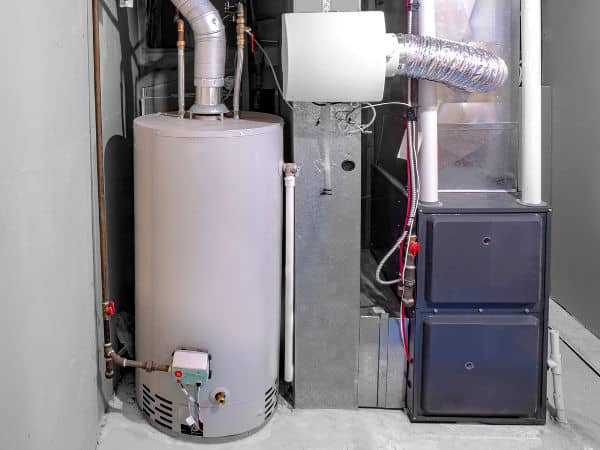Have you been interested in additional info around Tips on Maintaining a Water Heater?

Hot water is crucial for daily comfort, whether it's for a revitalizing shower or washing meals. To ensure your hot water system runs successfully and lasts longer, routine upkeep is essential. This short article gives useful pointers and understandings on just how to preserve your home's warm water system to stay clear of interruptions and expensive fixings.
Introduction
Keeping your home's warm water system might appear challenging, however with a couple of easy actions, you can ensure it runs smoothly for many years to come. This guide covers everything from comprehending your hot water system to DIY upkeep pointers and understanding when to employ expert help.
Importance of Preserving Your Hot Water System
Normal maintenance not just expands the life-span of your hot water system yet also guarantees it runs efficiently. Ignoring upkeep can lead to decreased efficiency, higher energy expenses, and also early failing of the system.
Signs Your Warm Water System Demands Upkeep
Recognizing when your warm water system needs attention can prevent significant issues. Look out for signs such as inconsistent water temperature, unusual noises from the heating unit, or corroded water.
Understanding Your Hot Water System
Prior to diving into maintenance tasks, it's helpful to understand the standard parts of your warm water system. Normally, this consists of the water heater itself, pipes, anode rods, and temperature controls.
Monthly Maintenance Tasks
Normal month-to-month checks can assist catch minor issues before they escalate.
Purging the Hot Water Heater
Purging your water heater removes sediment build-up, boosting performance and extending its life.
Checking and Replacing Anode Rods
Anode poles stop rust inside the tank. Examining and replacing them when broken is vital.
Checking and Adjusting Temperature Level Setups
Changing the temperature setups makes sure ideal efficiency and security.
DIY Tips for Maintenance
You can carry out several upkeep tasks on your own to maintain your warm water system in leading condition.
Looking for Leaks
Routinely inspect pipelines and connections for leakages, as these can bring about water damages and higher costs.
Examining Pressure Relief Valves
Evaluating the stress safety valve ensures it operates properly and avoids too much stress buildup.
Protecting Pipes
Shielding hot water pipelines decreases heat loss and can save power.
When to Call a Professional
While do it yourself maintenance is beneficial, some problems require specialist experience.
Complicated Concerns Needing Specialist Aid
Examples consist of significant leakages, electrical troubles, or if your water heater is continually underperforming.
Routine Specialist Maintenance Advantages
Specialist maintenance can consist of thorough examinations, tune-ups, and ensuring conformity with safety requirements.
Verdict
Regular maintenance of your home's hot water system is crucial for efficiency, durability, and price savings. By adhering to these tips and understanding when to look for specialist help, you can guarantee a dependable supply of hot water without unanticipated disturbances.
How to Maintain an Instant Hot Water Heater
Before tinkering with your hot water heater, make sure that it’s not powered on. You also have to turn off the main circuit breaker and shut off the main gas line to prevent accidents. Also turn off the water valves connected to your unit to prevent water from flowing into and out of the appliance. 2. When you’re done, you have to detach the purge valves’ caps. These look like the letter “T” and are situated on either side of the water valves. Doing so will release any pressure that has accumulated inside the valves while at the same time avoid hot water from shooting out and burning your skin. 3. When the purge valves’ caps are removed, you have to connect your hosing lines to the valves. Your unit should have come with three hoses but if it didn’t, you can purchase these things from any hardware or home repair shops. You can also get them from retail stores that sell water heating systems. Read the user’s manual and follow it to complete this task properly. When the hosing lines are connected, open the purge port’s valves. 4. You should never use harsh chemical cleaners or solutions when cleaning your unit. Make use of white vinegar instead. It should be undiluted and you’ll probably use about 2 gallons. 5. Now flush your water heater. This task should probably take about 40 minutes. We can’t give you specific directions for this because the procedure is carried out depending on the type, model and brand of your heater. With that being said, refer to the user’s manual. 6. When you’re done draining the unit, you have to turn off the purge port valves again. Remove the hosing lines that you earlier installed on each of the water valves. Put the valve caps (purge port) back in their respective places and be very careful so as not to damage the rubber discs that are found inside these caps. 7. Now that everything’s back in place, check your user’s manual again to find out how to reactivate your water heating system. 8. Once it is working, turn one of your hot water faucets on just to let air pass through the heater’s water supply pipes. Leave the tap on until water flows smoothly out of it. https://www.orrplumbing.com/blog/2014/september/how-to-maintain-an-instant-hot-water-heater/

Do you like reading about Tips on Maintaining a Water Heater? Make feedback down below. We would be happy to know your thoughts about this write up. Hoping to see you back again soon. If you enjoyed reading our blog entry if you please remember to pass it around. I love reading our article about Tips on Maintaining a Water Heater.
Get Estimate